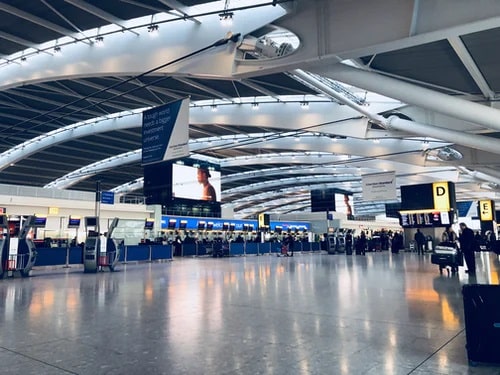FUTURE TRAVEL
Northern Hemisphere economies are starting to open, each with a set of restrictions, and a separate pace. In the United States, New York and New Jersey are functioning at limited capacity but in Texas and Florida it’s business as usual. Europe and the Middle East were impacted earlier by COVID-19, flattened the curve (some countries more effectively than others), and are looking to restart their economies for the summer. For example, Israel has basically overcome COVID-19 and returned to a cautious normal. With economies opening there will be a push to restart business travel, but given the current situation and Zoom’s effectiveness that could take some time. We will explore what may be expected when business travel resumes.
Consolidation of airlines
The travel and hospitality industry has been decimated by COVID-19, with airlines among the worst hit. Zoom conferences and working from home are becoming the norm (even before the virus), so many organizations are questioning the need to spend on employees’ travel. COVID-19 is termed the “great accelerator,” pushing companies to function remotely. Business travel will occur, but likely at a reduced level among fewer airlines.
According to this article, “American Airlines will eliminate 30% of management and administrative jobs at the carrier as it moves to slash costs amid the impact of COVID-19 on the travel industry, according to an internal memo.” And this is with federal assistance. The decline will happen in other industries as well, but at a slower pace. Companies with enough cash to survive could become the winners post-COVID-19 and dominate their industries.
What airports may look like
Air travel accelerated the spread of COVID-19. Travelers should expect longer lines and new ways for those exhibiting symptoms to check in. This Vox article states: “as the pandemic wears on, airlines and airports will want to limit passengers’ contact with high-touch surfaces and exposure to airport staffers. One hope is that deploying new contactless technologies will not only cut down on lines but also reduce our overall time in airports and potential exposure to carriers of the virus.”
If COVID-19 is the great accelerator, then technology to create a seamless and easy experience for travelers will be fast tracked – as will biometric technology and AI face recognition for security purposes. Airports and airlines will have to allow extra space between passengers. Another challenge is the recycling of air on a plane. One thing is for certain, How effectively airports can identify and track the virus will determine its spread to other countries.
Business travel at what cost?
This brings into question, what if a traveler who has COVID-19 displays distinctly different signs than someone who does not have the virus, and AI at an airport picks it up. Since the spread of this virus we have been treading on dangerous ground; Israel crossed that brink and came back. Not every country, including democracies, can use their intelligence services’ powerful capabilities and later limit their power. In Latin America and Eastern Europe this is fertile ground for corruption, and could even happen in the US. Companies as well as individuals will have to ask tough questions – and they may opt for a Zoom conference call to avoid the headache.
Travel bans and possible quarantines
Brazil and other countries where the coronavirus is spreading are imposing travel bans on their citizens; as the virus spreads travel bans could change between destinations from month to month. Some locations may require a self-quarantine for two weeks. Political factors are to be considered, as when Brazilian President Jair Bolsonaro was in lock step with President Trump, only to have the US slap a travel ban on Brazil.
We cannot anticipate what the “new normal” will look like. Coming years will be tough on civil liberties – and some may be eroded voluntarily to keep us safe when traveling.
To find out more, please reach out to info@interforinternational.com





